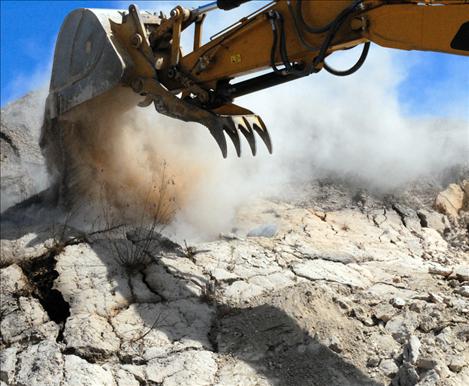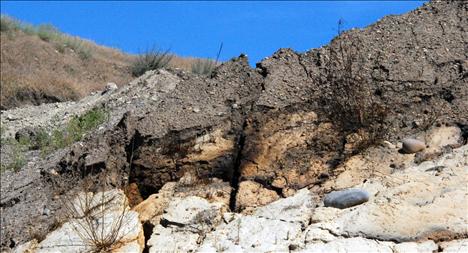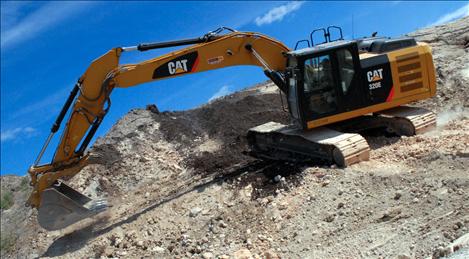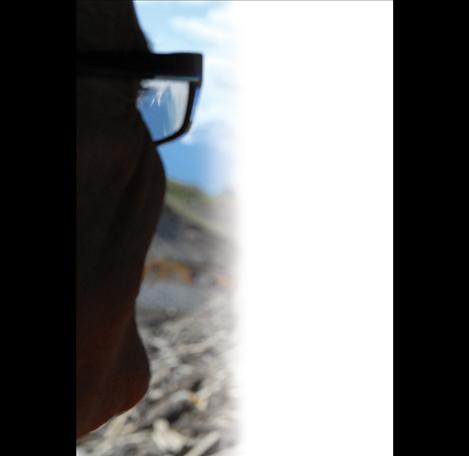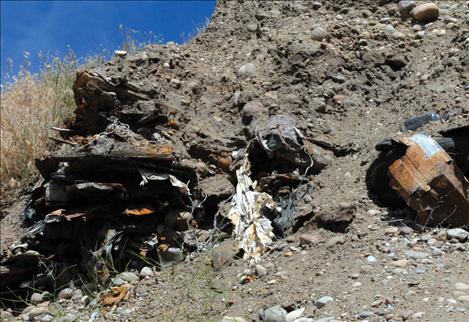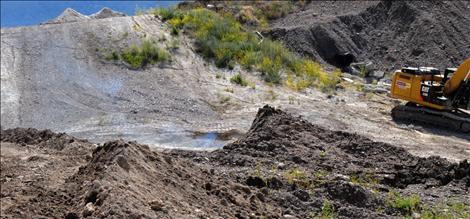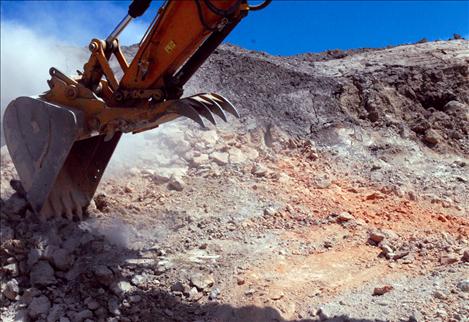Landfill fire resists efforts to quell it
Hey savvy news reader! Thanks for choosing local.
You are now reading
1 of 3 free articles.
POLSON — Small puffs of smoke drift from cracks in the earth at the old “wood pit” at the Lake County Transfer Station.
An underground fire is “worming its way through” the wood, said Mark Nelson, Lake County’s solid waste program manager.
“We’ve been messing with it for almost a year and a half,” Nelson said. “We’ve probably already spent over $100,000 on it.”
Most of that money was spent purchasing additional soil, clay and bentonite, to try and smother the fire. Lake County Transfer Station workers just can’t get the air supply shut off.
A fire needs three items — heat, oxygen and fuel, Nelson said.
For fuel, the wood pit contains wood scraps, stumps and brush from Lake County residents.
Plus there are items sneaked in by people — painted items, glued items, plastic posts — which aren’t supposed to be in the wood pit.
Local business Western Bee Supplies sends three to five truckloads of scrap wood to the landfill every day, Nelson said. He believes the sawdust that comes with the wood is what combusted and started the fire, providing the heat.
The wood is kiln dried, so it doesn’t have moisture in it, but there’s lots of moisture with the sawdust. The landfill can’t get solid compaction with its big equipment. The wood scraps and branches interweave and form a sort of mat with trapped air inside. The workers who run the dozers and excavators say they can feel the ground give as they drive over it.
“There are air pockets in there that feed the fires,” Nelson said.
With no success in eliminating the fire, Nelson said a national “garbage guru” recommended Tony Sperling, Ph.D., of Landfill Fire Control, Inc.
Sperling laid out a fire extinguishment plan for the Transfer Station, which included digging through the areas with an excavator and smothering the fire, and constructing a firebreak, a “y” shaped-trench dug down 49 feet and then putting in a fire wall 10-feet thick. This will result in 11,083 cubic yards of soil moved. They’ll also dig holes to assess the oxygen suppression.
The problem, Nelson said, is due to settlement. The wood is scattered throughout the fire area “like jackstraws,” layers over layers. The gravel around the area is porous and “acts like a chimney” by letting in air.
Since the fire started underground, where the fuel has burned there are caverns, and they collapse.
Greg Johnson, Johnson Excavation, Inc., has been using an excavator to “pound” down on the smoking ground with the excavator’s bucket to expose any holes.
He said he opened up a 10-foot hole that looked “like the fires of hell” in a picture on the St. Ignatius Mission walls.
In places, the clay has been “baked” to a light orange by the fire underneath it.
After Johnson has completed his work, Nelson said, “We will aggressively attack the hot spots.”
Thermal imaging will probably be used, according to Nelson.
“If that doesn’t work, basically we need to deconstruct the landfill,” Nelson said, and that would lead to a large expense for Lake County.















